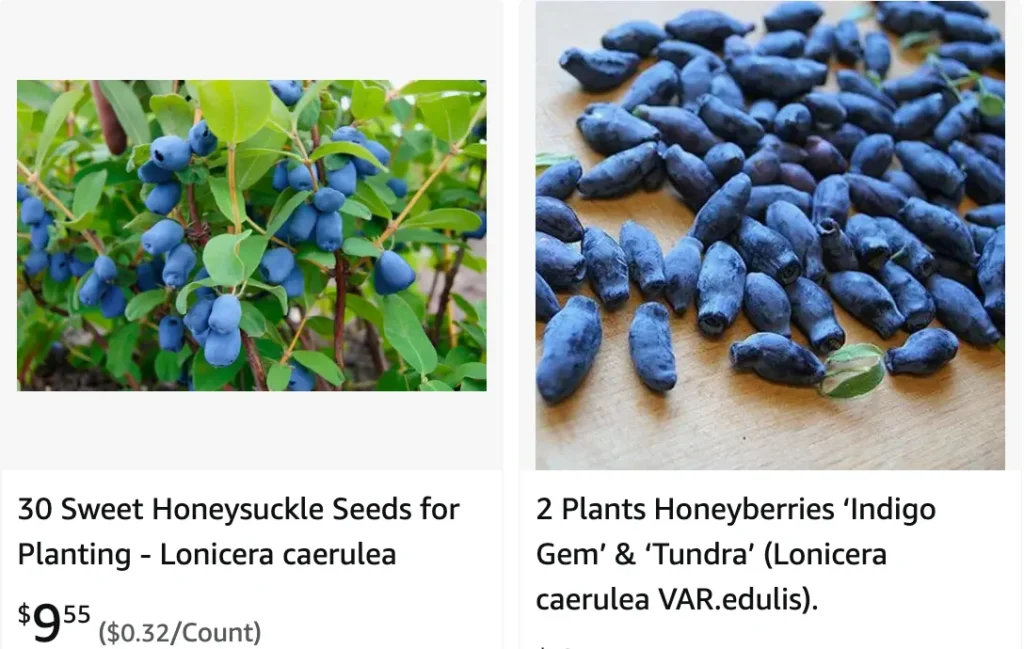
Top 100 Gift Ideas For Plant Lovers 2024

Honeyberry Bliss: Growing Lonicera Caerulea in Your Backyard
For years, I’ve been a berry enthusiast. From the tart tang of raspberries to the juicy sweetness of blueberries, my garden has overflowed with delicious options. But recently, I stumbled upon a hidden gem: Lonicera caerulea, also known as the honeyberry. These unique shrubs captured my attention with their beautiful blue fruits and the promise of a taste unlike any other.
Intrigued, I delved into the world of honeyberry cultivation, and let me tell you, it’s been a delightful journey. Now, I’m here to share my experience and equip you with the knowledge to cultivate your own patch of honeyberry bliss.
Planting the Seeds of Success: How to Grow Lonicera Caerulea
Growing honeyberries isn’t overly complicated, but there are a few key factors to consider for a successful harvest. Here’s a breakdown of the essentials:
Location, Location, Location: Honeyberries thrive in full sun, receiving at least 6-8 hours of direct sunlight daily. While they can tolerate partial shade, optimal fruit production occurs with ample sunshine.
Soil Savvy: These adaptable shrubs can handle a range of soil types, but well-drained, slightly acidic soil (pH 6.0-6.5) is ideal. If your soil is on the heavier side, consider amending it with compost or aged manure to improve drainage.
Planting Partners: Honeyberries are self-infertile, meaning they require two different varieties to produce fruit. This shouldn’t deter you though! Planting two compatible varieties within 10-15 feet of each other ensures proper pollination by bees and other insects. Popular choices include Indigo Yum, Bluetiful, and Aurora.
Planting Process: The best time to plant bare-root honeyberries is in early spring before new growth appears. Dig a hole twice the width of the root ball and slightly deeper. Gently loosen the roots and position the plant in the hole, ensuring the crown sits at soil level. Backfill the hole, tamping down the soil gently to remove air pockets. Water thoroughly after planting and keep the soil consistently moist during the first growing season.
Caring for Your Honeyberry Bounty: How to Keep Your Plants Thriving
Once established, honeyberry care is relatively simple. Here’s what you need to know:
Watering: Honeyberries prefer consistent moisture, especially during fruit development. Aim to water deeply once or twice a week during dry periods, allowing the soil to dry slightly between waterings.
Mulching: Applying a 2-3 inch layer of organic mulch around the base of your plants helps retain moisture, suppress weeds, and regulate soil temperature. Sawdust, wood chips, or shredded bark are all suitable options.
Fertilizing: Honeyberries are generally low feeders. A light application of a balanced organic fertilizer in early spring is sufficient. Avoid over-fertilizing, as this can promote excessive foliage growth at the expense of fruit production.
Pruning: Regular pruning isn’t strictly necessary but can encourage bushier growth and improve fruit production. Prune in late winter or early spring before new growth emerges. Remove any dead, diseased, or damaged branches, and thin out crowded stems to improve air circulation.
Sweet Rewards: Harvesting and Enjoying Your Honeyberries
Patience is key when it comes to honeyberry harvests. Most varieties won’t produce fruit until their second or third year after planting. However, the wait is well worth it! When the berries ripen, they’ll turn a deep blue or blue-black, depending on the variety. Taste a berry – when it yields to gentle pressure and bursts with sweet, tart flavor, it’s ready for picking.
Honeyberries are incredibly versatile fruits. Enjoy them fresh off the bush, incorporate them into jams and jellies, or bake them into delicious pies and muffins. Their sweetness rivals blueberries, with a hint of floral honey flavor that adds a unique twist to your culinary creations.
Is Lonicera Caerulea Invasive?
Honeyberries are not considered invasive in most regions. However, it’s always a good practice to check with your local authorities regarding any specific regulations in your area.
By following these simple guidelines, you can cultivate a thriving patch of honeyberries that will reward you with years of delicious harvests. So, why not give these delightful shrubs a try and add a touch of honeyberry bliss to your backyard?



